Last week, I broke down which receivers had the most success on each of the main types of passing routes in the NFL. The NFL, though, is just like the rest of life—there are two sides to every story. So, this week I break down the different coverage types a corner can be in, and then look at which corners had the most success versus different passing routes in the 2016 season. With this analysis, I aim to answer such questions as “Which defenders stopped a slant in man coverage most effectively?” and, “Which corner player defended the go route in a cover-3 best?”
Coverage types
Man-to-man (cover-0, 1, 2)
This is the simplest coverage scheme for a corner in the NFL. As a defender, your job is to stop the receiver lined up directly in front of you. You cover the receiver wherever he goes on the field, and you’re responsible for his actions on the play. If a defense runs a cover-0, they are leaving no safety help for defenders, and corners are left on an island. Typically, in a cover-0, the defense will blitz to protect corners from having to cover for too long. More often man schemes are played with one or two safeties over the top. When there is only one safety up top, this is known as a cover-1; when there are two safeties playing over the top, this concept is known as a cover-2 man. With one or both safeties over the top, corners will shade a side of the receiver knowing they should have help from a deep safety.
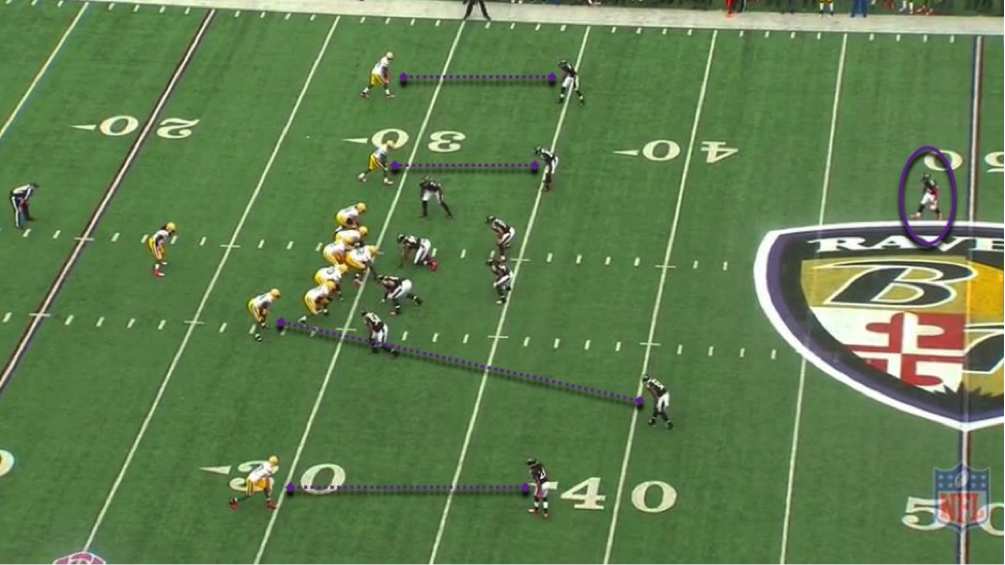
Cover-2
Cover-2 is a zone scheme where two safeties are responsible for the deep part of the field. Each safety is responsible for half of the field, starting around 13 yards deep off the line of scrimmage. The linebackers will play the middle of the field, with one defender’s job to play a deep-middle section. A corner’s job is to cover the flats in the cover-2. The flats are the areas from each hash to the sidelines, going from the line of scrimmage to about 13 yards deep. The hole in the zone between the flat defender and defender over the top is known as the cover-2 hole, and it’s what QBs look to attack most often when they see this coverage scheme. To take away a section of the cover-2 hole, a corner will look to jam the closest receiver near the line of scrimmage before reading the offense and picking up a receiver running into the flat. His jam is an attempt to funnel the receiver inside and give the safety less ground to cover on a vertical route.
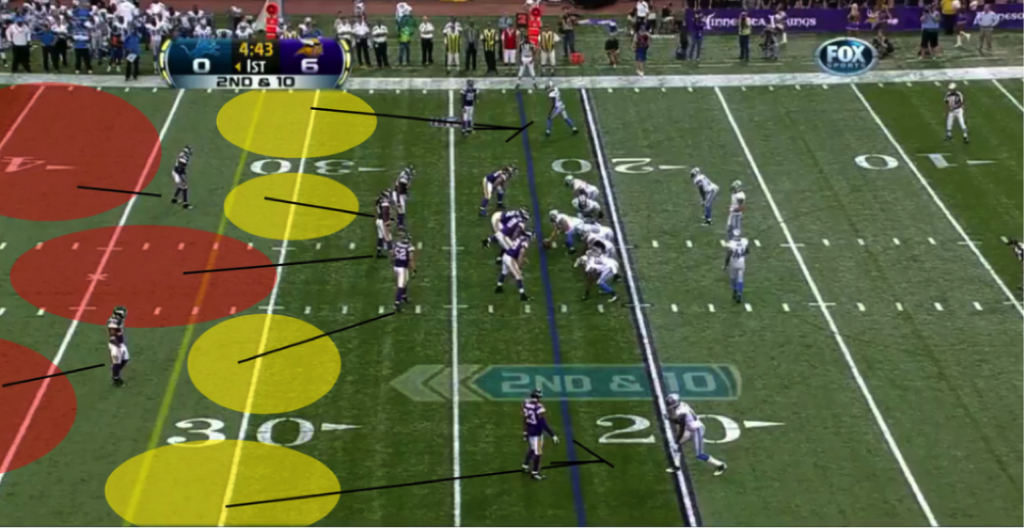
Cover-3
Cover-3 is a zone scheme where three defenders have deep coverage responsibility. The deep part of the field is broken up into three sections, with each corner taking outside responsibility and a safety taking the middle of the field. This coverage scheme is designed to make it harder to attack the deep part of the field, but it leaves the underneath section of the field more open, covered by one safety and linebackers. Corners can have man principles in these coverages as they trail a receiver on vertical routes.
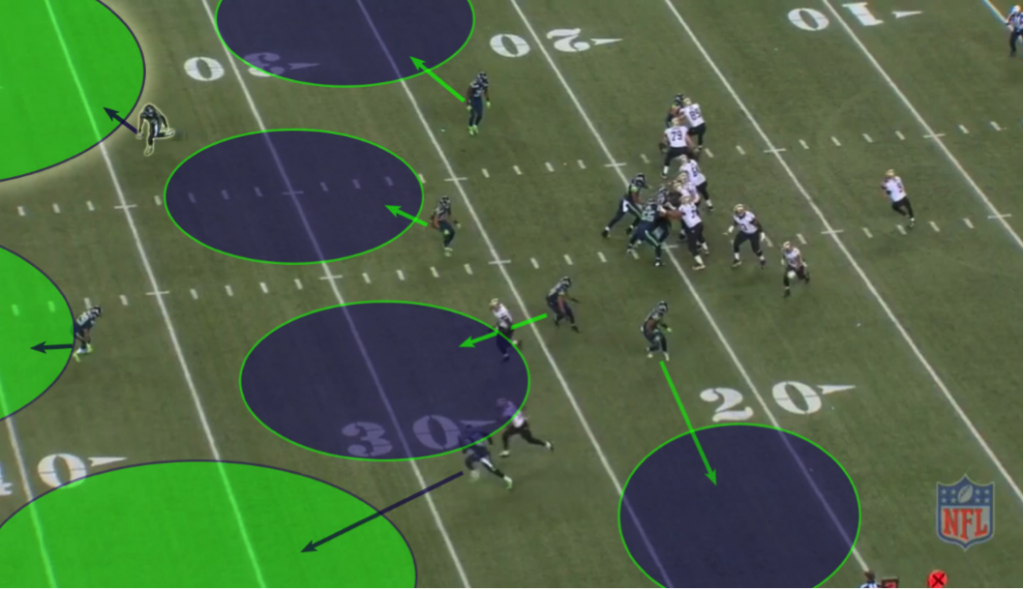
Cover-4
Cover-4, also known as quarters defense, is a zone scheme where four defensive backs cover the deep part of the field, while three defenders cover underneath. With your basic personnel on the field, the two corners have deep responsibilities outside of the numbers, while each safety covers his respective section of the middle of the field. Cover-4 allows the defense to bracket receivers going deep with both a corner and a safety, giving each one the chance to help the other stop a go or post route. While this a zone coverage, it has man principles, as defenders carry receivers up the field. When an offense is lined up in trips formation (three receivers on the same side of the field), the backside safety will cover the inside slot receiver up the field. Rolling the coverage ensures that the defense will never be outflanked by the offense on one side of the field. This defense creates very tight windows for a QB to throw deep into. However, quarters coverage can leave a defense exposed to underneath routes.
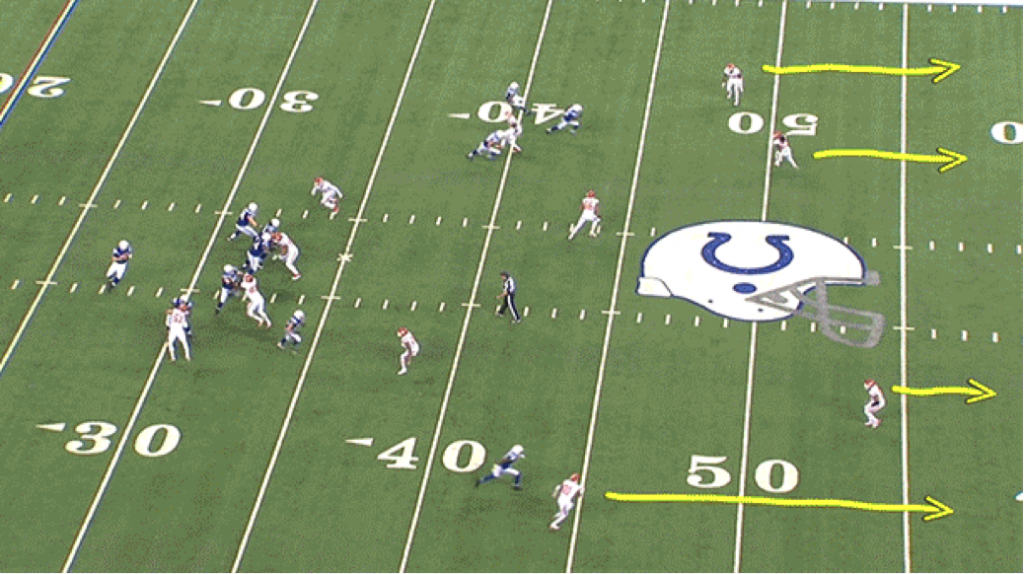
Cover-6
Cover-6 is a combination of both the cover-2 concept and the cover-4 concept. On one half of the field, the defense has cover-2 principles, while on the other half, it has cover-4 principles. This defense is almost always played on situations where the ball is on one hash. The short side of the field employs the cover-2 concept because there is less ground to cover, while the wide side will have both a safety and corner with deep responsibilities. This scheme can be highly effective, carrying the advantages of both cover-2 and cover-4, but it can also be taken advantage of on one side, while leaving the cover-2 hole on the other. Cover-6 can incorporate man principles, as well. Some defenses will run a cover-4 on one side and a cover-2 man on the other, leaving a safety over the top in zone and allowing the underneath defenders to play man-to-man coverage.
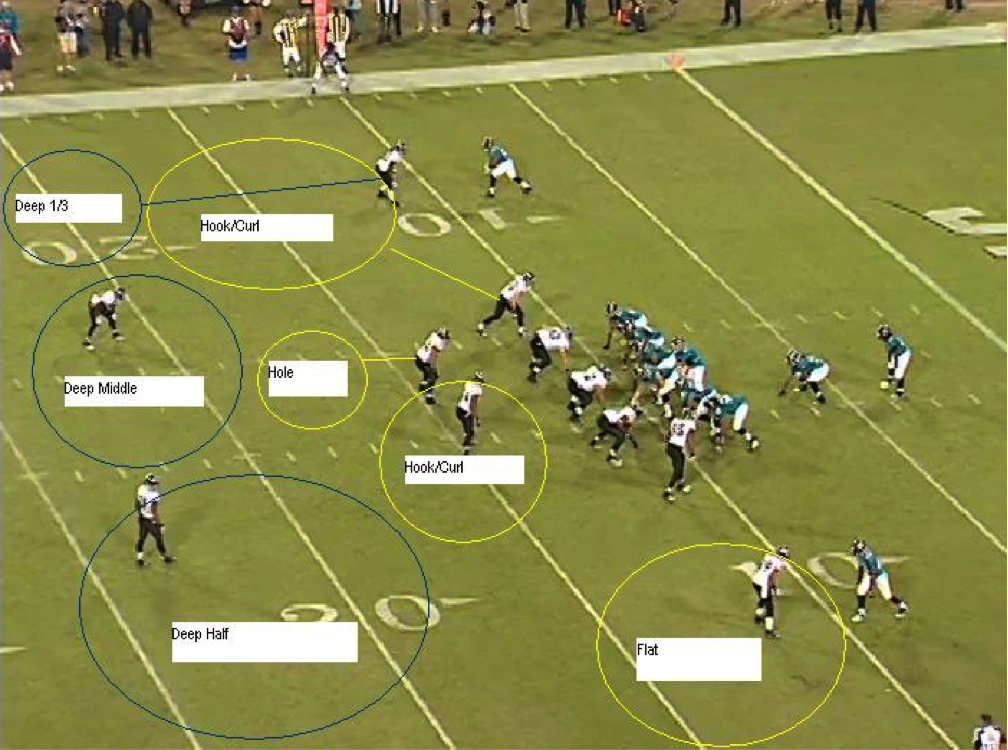
Corners vs. routes
Slant route
The slant route is a quick route run up the field where the receiver cuts across the field inside on a diagonal path. The route is designed to pick up short to medium gains while giving a receiver the opportunity to turn the ball up field and explode past the defense. The average depth of target (aDOT) of the slant route in the NFL was 6.36 yards, while QBs typically take a three- to five-step drop.
Best CB defending slant in 2016 (min. five targeted routes): A.J. Bouye, Texans
Bouye was targeted on slants 15 times, allowing five catches for 130 yards and one touchdown, but intercepting three passes. His three interceptions were tied for the lead league with Nolan Carroll. Six of the 10 incompletions were due to Bouye breaking up the pass. These numbers ranked him third among all corners, with a QB rating against of 48.6, and he earned PFF’s highest coverage grade versus the slant. Bouye was beaten once by Cincinnati's Brandon LaFell, resulting in an 86-yard touchdown with 82 yards after the catch. Excluding this one play, Bouye gave up only 44 total yards on 14 passes for an average yards-per-target of 3.14, and just 4.75 YAC per completion. Bouye was in a cover-1 defense on 14 of the 15 slants, and he lined up on the right side on 12 of the 15 slants. Only one of the 15 targeted passes was on a play where the QB was under pressure, so the rushers can’t get credit for his outstanding performance. Bouye dominated the opposing receiver, making QBs pay when they tried to attack him with the slant.
Honorable mention: Janoris Jenkins, Giants
The Giants used Jenkins in multiple ways while continually changing their coverage types. Jenkins was targeted on slants a total of nine times: three times in cover-1, twice in cover-0, twice in cover-6, and twice in cover-3. Jenkins surrendered six catches for 63 yards and intercepted one pass, for a QB rating against of 47.2. Two of his completions against were in cover-6 where had had deep responsibility and underneath throws are easy to give up. QBs tried to attack Jenkins as quickly as possible on slants, with a time to throw average of 1.67 seconds, and an aDOT against of 5.88 yards. Jenkins did a good job of keeping plays in front of him, however, allowing an average of only 5.1 yards after the catch and permitting double-digit yards after the catch only once.
Double-move
The double-move is a deception route where the receiver tries to draw the defender up and then beat him over the top. These routes consist of the quick-out-and-up, the out-and-up, the slant-and-go, and the hitch-and-go. These are slower-developing routes that require the offensive line to give the QB enough time to throw the ball down the field. QBs typically throw these routes on a five- or seven-step drop back with an aDOT of 23.48 yards.
Best CB defending the double-move in 2016 (min. three targeted routes): Brent Grimes, Buccaneers
Grimes dominated receivers on double-moves. He did not allow a single reception on five such attempts into his coverage area, giving QBs a 39.6 rating when targeting Grimes, tied for lowest in the league. Grimes had deep responsibilities on all five of his double-move targets. On one play he was the man defender, while on the other four he had deep-zone responsibilities. Grimes broke up three of the five passes on his way to earning the highest PFF grade for any corner versus double-moves. Grimes did a good job sticking to his man for a long time, as the average time to throw when he was targeted on double-moves was 2.76 seconds, 0.07 seconds above the league average.
Honorable Mention: Orlando Scandrick, Cowboys
Scandrick, like Grimes, didn’t allow a single completion on a double-move. He was targeted three times on such routes, and broke up one attempt. Scandrick did an excellent job staying with his man, as the average time to throw against him was 3.03 seconds, an eternity in the NFL. On his only targeted play when in man coverage, he had to stay in coverage for only 2.1 seconds before the throw. On his two cover-3 targets, the offense averaged 3.5 seconds before the throw, and Scandrick stayed with both T.J. Jones and DeSean Jackson throughout.
Go route
In backyard football terms, go deep. The go route is designed to get behind the defense for the big play. The ability to take the top off the defense is a key component to any successful offensive attack. The go route is designed both for big yards before the catch and to give the receiver the ability to take it the distance after the catch. For this to work, the line must allow time for receivers to work their way down field. QBs will typical have a five- to seven-step dropback, and the aDOT of these routes is 28.53 yards.
Best CB defending the go route in 2016 (min. six targeted routes); Dre Kirkpatrick, Bengals
Dre Kirkpatrick defended the go route as well as one can possibly do it in 2016. He was targeted nine times on such routes without allowing a catch, and he intercepted two passes (tied for most in NFL). He had the lowest QB rating against, with a 0.0, 39.6 points lower than if a QB just threw an incomplete pass every time. Kirkpatrick was used in multiple coverages when stopping the go route: five times he was in man coverage, either cover-1 or cover-2 man, and four times in zone, twice in cover-6, once in cover-4, and once in cover-3. Both of Kirkpatrick’s interceptions came in zone coverage, while in man he broke up one of five passes with another being incomplete due to an underthrow.
Honorable mention: Patrick Peterson, Cardinals
Peterson was targeted eight times on go routes, allowing two catches for 47 yards and intercepting one pass. He only gave up nine yards after the catch all season on go routes. He had a QB rating of 12.0 against him, lower than if a QB threw an incompletion every time. Peterson cut off the route on five of his six incompletions, leaving the passes uncatchable, and intercepted the other pass. Peterson was used in cover-1 in five out of eight such targets, cover-3 in two, and cover-6 in one. Both completions were in man-to-man coverage.
In routes and out routes
In routes and out routes are essentially the same thing, but in opposite directions. The route involves the receiver going up the field, then making a hard-horizontal cut in or out—hence the name. The aDOT of these routes is 9.73 yards.
Best CB defending in routes and out routes in 2016 (min. 10 targeted routes): Darius Slay, Lions
Slay was targeted 12 times on such routes in 2016, allowing four catches for 38 yards, and just 7 yards after the catch. 38 yards allowed was the second-lowest amount in the NFL. He had one interception and earned a QB rating against of 8.3, by far the lowest of any defender on these routes. His interception came while playing in a cover-2 zone. He had six targets while in man coverage, and four targets in a cover-4 zone. On his six man targets, he broke up three passes and allowed two catches, one for 9 yards and a first-down conversion. While in zone coverage, he allowed one first down on six attempts, with an interception and a pass breakup. His first-down completion in zone was versus the Colts when Andrew Luck took 3.4 seconds to throw the ball.
Honorable mention: A.J. Bouye, Texans
Bouye was targeted 24 times on such routes, ninth-most of any corner in the league, on both in routes and out routes. However, he was 68th in yards allowed, giving up 105 total yards. Bouye only allowed 8 total yards after the catch, with just 0.73 yards after the catch surrendered on average per completion, eighth-best out of 117 qualifiers. His QB rating against was 23.8, fourth best in the NFL. Bouye was targeted on man coverage nine times, allowing four completions and only one first down. Of the 15 plays when he was targeted while in zone coverage, he intercepted two passes, broke up one, and allowed four first downs.
Post and corner routes
The post and corner routes are essentially the same thing, just run in different directions. The corner route is when a receiver runs deep and then cuts diagonally to the sideline. The post route is the same thing except the receiver cuts toward the middle of the field. These routes are designed to get deep down the field; in 2016, they had an aDOT of 22.38 yards.
Best CB defending post and corner routes in 2016 (min. six targeted routes): Xavier Rhodes, Vikings
Throwing at Rhodes on post and corner routes did not end well for quarterbacks in 2016. On eight such targets, he allowed only one completion and intercepted four passes, two more than the next-closest corner. His QB rating against was 0.0—one of only two players in the NFL to have a 0.0 QB rating against on any route in the NFL this season. Six of his eight routes came in zone coverage, where he allowed no completions and had three interceptions. In man coverage, he intercepted one pass and gave up a 17-yard completion to Jacksonville's Allen Robinson, the only receiver to beat him all season on post and corner routes.
Honorable mention: Richard Sherman, Seahawks
Quarterbacks didn’t have much more success targeting Sherman than they did Rhodes in 2016. On six targets, Sherman gave up one completion, picked off two passes, and earned a QB rating against of 6.3 (third-best). Sherman faced three post or corner routes in cover-3, and three in cover-1. Both interceptions came while in cover 3, but so did his one allowed completion to the Arizona Cardinals. On that single completion allowed, he was in coverage for 3.3 seconds before Carson Palmer targeted tight end Ifeanyi Momah. No QB completed a pass versus Sherman on these post and corner routes when he was in man coverage, though he did get away with a likely pass interference penalty versus Julio Jones to seal the game versus the Falcons.
Hitches and comebacks
These routes are run up the field and then the receiver cuts back towards the quarterback. Comebacks are typically deeper routes, with an aDOT of 11.67 yards, while the hitch is a short route with an aDOT of 7.4 yards. Comebacks are not only more likely to be deeper down the field, but the receiver will work his way back to the QB more. The hitch, meanwhile, is more of a quick turn back to the QB. While each route has its differences, the goal is similar: the receiver wants to work the defender up the field and turn back to the ball.
Best CB defending hitches and comebacks in 2016 (min. nine targeted routes): Aqib Talib, Broncos
Talib led the league in QB rating against on hitches and comebacks, at 15.4. He was targeted on 16 such passes, allowing seven catches for 63 yards, only 9 of which came after the catch. Talib had the third-most interceptions, with two, behind only the Chargers' Casey Hayward and the Bills' Stephon Gilmore, who each had three. On top of his interceptions, Talib also had two passes broken up. Six of his 16 targeted coverage snaps came while in man coverage; he allowed three first downs, but no play went for more than 9 yards. Zone coverage allowed Talib to keep an eye on the QB, and he was able to jump two of the 10 routes he faced in zone for interceptions.
Honorable mention: Stephon Gilmore, CB Bills
Gilmore tied for the lead league in interceptions versus hitches and comebacks, with three. He was targeted 14 times, allowing six completions for 87 yards. He had a QB rating against of 24.1, which was the third-lowest in the league. Gilmore was in man coverage on six targets, allowing two completions for 41 yards. He allowed 17 yards after catch on hitches for the season, but 16 of them came on a completion versus Antonio Brown. Two of his interceptions came in man coverage, picking off both Cincinnati's Andy Dalton and Arizona's Carson Palmer. On his 10 zone coverage snaps, he allowed a 40 percent completion rate, with three receptions that went for first downs. He picked off one pass and had one pass breakup in zone coverage.
Crossing routes
The crossing route is separated from the dig route due to its lack of a vertical stem. The depth will vary from short drag routes to deep crossers, and it includes variations such as a receiver throttling down to settle between zones. The aDOT of these routes is 7.99 yards, while the QB dropback depth can vary widely, in part due to the variance in depth of this route.
Best CB defending crossing routes in 2016 (min. seven targeted routes): Marcus Peters, Chiefs
Peters was targeted six times on crossing routes in 2016, allowing only one catch for 6 yards. His 1 yard allowed per target was the lowest mark among all qualifying corners. He had a QB rating against of 39.6, second-best in the league. His crossing routes were closer to drag routes than deep crosses, as his aDOT against was only 7.5 yards, with just two targets coming deeper than 10 yards (13 and 18 yards). Peters was aligned in man coverage on all six of his targets, and his lone completion was against the Chargers' Tyrell Williams, who led all receivers in yards on the crossing route. Peters did give up one big play to Indianapolis' T.Y. Hilton for 40 yards that was called back on an offensive penalty. On this play, however, Andrew Luck had 4.9 seconds to throw, and the completion is more on the pass rush than Peters.
Honorable mention: Chris Harris Jr., Broncos
Harris was second to only Marcus Peters in yards allowed per target, at 2.69 yards. He was targeted seventh-most frequently on crossing routes, but allowed the 101st-most yards out of 109 qualifiers. Targeted 13 times, Harris allowed seven completions for 35 yards and a QB rating against of 59.5. Seven of the targets Harris saw came out of the slot, and on six of them, he was in man coverage. On those plays, he gave up two completions for 9 total yards and broke up one pass. Harris played six targeted snaps on the outside, three times in zone coverages, and three in man. On the outside, Harris gave up four completions for 23 yards, none of which went for first downs.
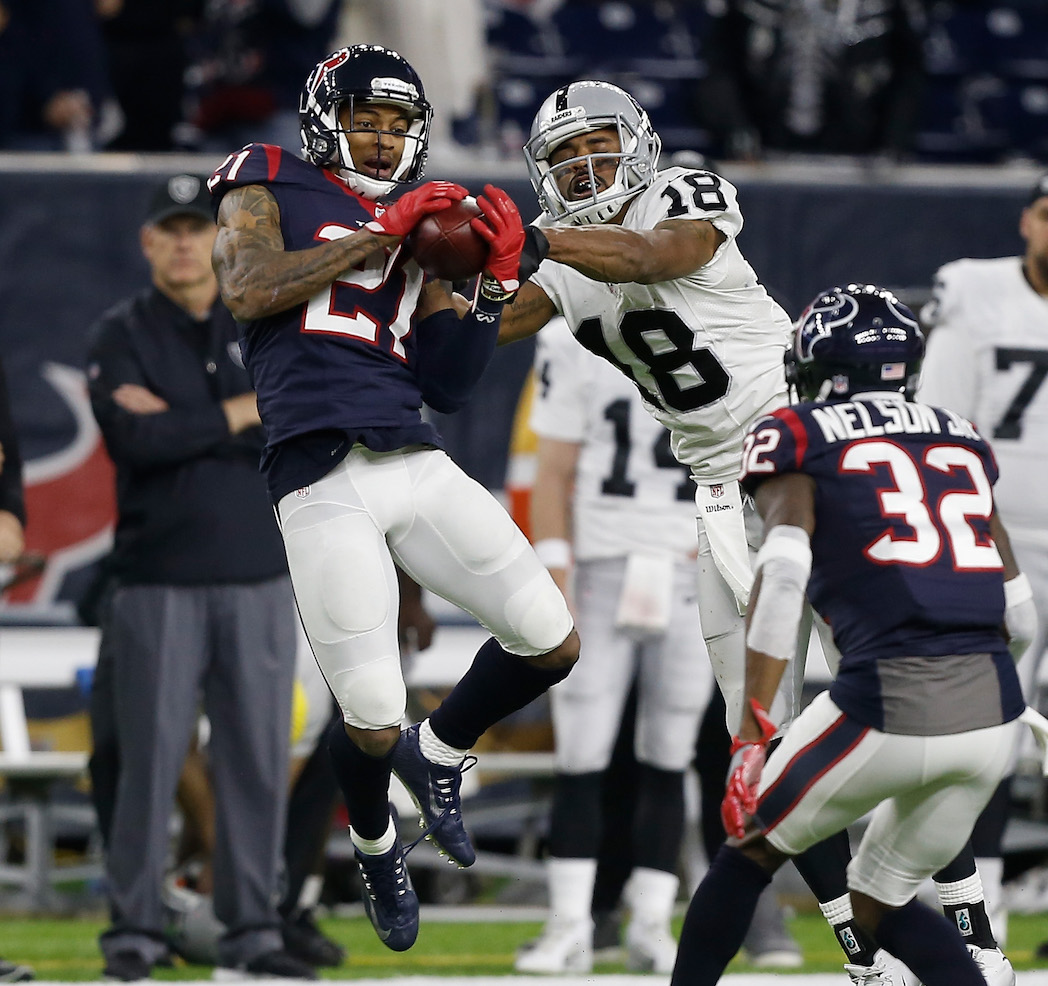
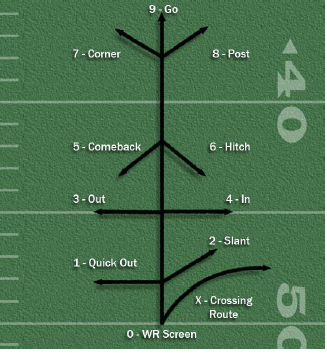


 © 2024 PFF - all rights reserved.
© 2024 PFF - all rights reserved.